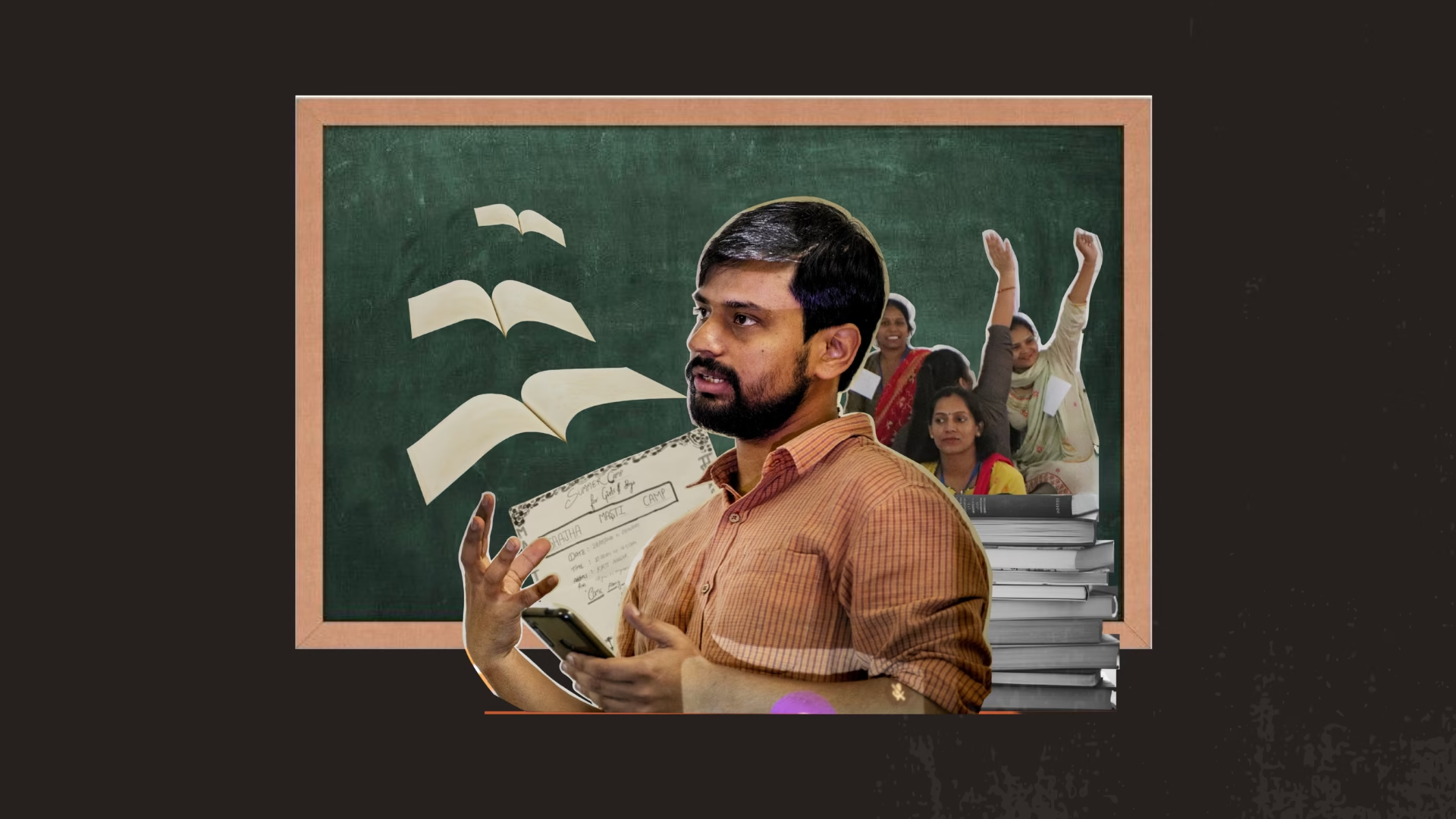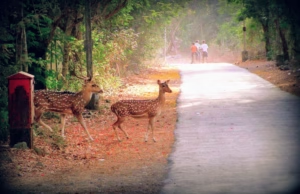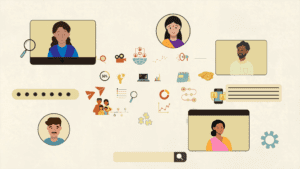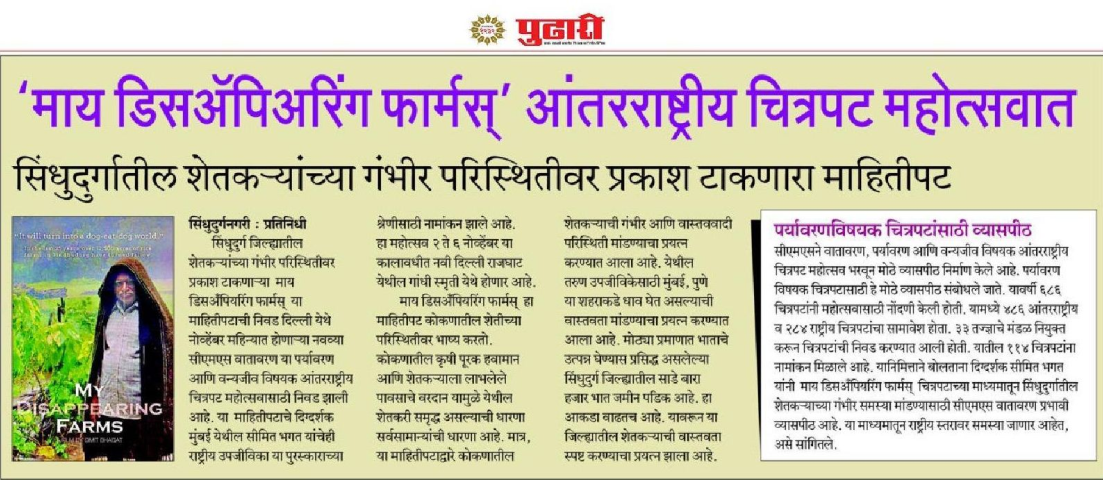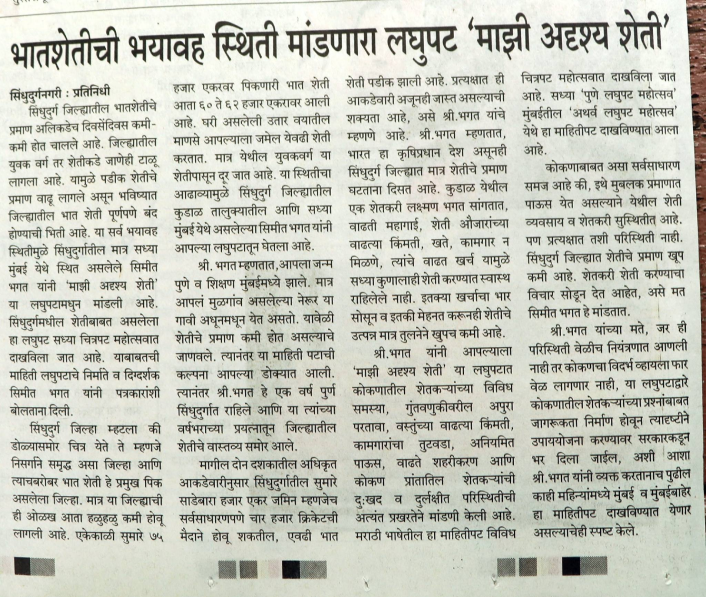In this interview for our Leadership Series, Saransh Vaswani shares the journey that led him to found Saajha, a nonprofit organisation working to ensure parents are partners, not bystanders, in their children’s education. Reflecting on his early years in Jhansi and Gwalior, and the pivotal moments that shaped his resolve, Saransh speaks candidly about the questions he couldn’t stop asking: Why do some children thrive while others slip through the cracks? He discusses the lessons learned from his time in theatre, student activism, and multiple fellowships, and how these experiences shaped his approach to listening deeply and building collaboratively.
Saajha, which currently operates across regions such as Delhi, Maharashtra, Jharkhand, and Karnataka, supports thousands of parents in becoming actively engaged in their children’s learning. From a single classroom to a network that has reached over 70,000 parent volunteers and influenced policy, Saajha’s work is grounded in empathy, trust, and community ownership.
If you’re curious about what it takes to grow a community-driven idea into a movement for systemic change, while staying true to your own well-being and values, this conversation offers thoughtful insights into leadership, resilience, and the power of collective voice.
Transcript of the Interview:
Simit: Hi Saransh, welcome! It’s so good to have you with us today. I’ve really been looking forward to this conversation, there’s so much to unpack about your journey.
Saransh: Thank you so much, Simit. I’m happy to be here. Looking forward to it too.
Simit: Great! So let’s start from the beginning. You grew up in Jhansi, right? What was it like for you growing up there?
Saransh: So, to give you some background, my grandfather migrated from Pakistan and settled in Gwalior. So both my parents were born in Gwalior, my father and my mother. My father then got a job in the UP government, and then he was posted in Jhansi. So I grew up mostly in small towns.
I think when you grow up in a smaller city, you really feel that vibe, you know everyone, things are slower, and at that time, Jhansi wasn’t the happening place it’s becoming now. Back then, it felt like the only goal was to study hard and get out, to go somewhere bigger. That was very clear for me too.
So growing up, there was always this expectation: either you become a doctor or an engineer. But my parents were actually quite relaxed about it. They gave me the space to figure out what I really wanted to do, which helped me build the confidence to explore different things. I got involved in theatre in school and participated in numerous extracurricular activities.
That freedom made me think beyond Jhansi. I began imagining what it would be like to study at the University of Delhi. Moving to Delhi was a big shift for me. After living in a small town, suddenly being in a huge city was a proper culture shock.
After living in a small town, suddenly being in a huge city was a proper culture shock.
I still remember that in Jhansi I spoke only Hindi. When I came to Delhi for the first time, I thought, “Now I’ll have to speak in English all the time.” I even remember going into a McDonald’s and trying to order in English, but the person behind the counter didn’t know English either! It was my first reminder that it’s not just about language but about feeling comfortable in a new place.
It took me two or three months to feel at ease and realise that Delhi is a city where you meet all kinds of people. Delhi University, in particular, brings together students from diverse backgrounds. It took time, but that’s the best part of living in a big city, it pushes you to find your place.
Simit: So you’ve spoken about Jhansi and Delhi, but I’d love to know about your time during the Gandhi Fellowship. What was it like living in a village for the first time?
Saransh: Yeah, that was around September or October 2010. The Fellowship had this component where you had to stay in a village. Until then, I’d only ever lived in towns like Jhansi, so it was new for me. I remember thinking, let’s push myself. I decided not to take my phone, not to carry money, and see if I could really live on people’s kindness and support.
So I stayed at the school itself. The teachers there provided me with a place to sleep, and I’d receive meals from the children’s families or help out a bit in the fields in exchange for food. That time really taught me a great deal. I primarily taught students from Grade 2 to 5.

There was a boy named Vinod. He was in the 5th grade but struggled significantly with reading. He’d do his homework by just copying things out and would show it to me. But he didn’t really understand what he had written. He was on the verge of dropping out, he just wasn’t enjoying school.
Vinod came from a Dalit family who lived on the outskirts of the village, in a small house next to a bajra field. I spent seven or eight days with him, visiting his home, getting to know where he came from. His mother told me later that he’d left school and moved to Gurgaon to work with his father in a hotel.
That hit me because, for my family, it was always possible to support our education, there was always a safety net. But Vinod’s mother, who worked as an anganwadi worker, just didn’t have that choice, even though she really wanted him to keep studying.
That stayed with me for a long time. It made me think about how so many parents want the best for their kids, but don’t have the means or support to make it happen. Experiences like that plant something in you. They keep calling you back to the same question: how can we make sure parents don’t feel helpless?
Vinod’s experience made me think about how so many parents want the best for their kids, but don’t have the means or support to make it happen.
By 2013, that idea began to take shape. I began talking to Abhishek, who later became my co-founder at Saajha. We wondered, how can we help parents like Vinod’s mother feel that they can support their children’s learning, even when the system makes it so hard?
Simit: That story about Vinod really stays with you, doesn’t it? When you mentioned his family being Dalit, was that the first time you had come face-to-face with caste so closely?
Saransh: Yeah, that was probably the first time I really felt it. I’d grown up with a lot of privilege. So, even though you hear about caste, you don’t always see how it manifests in daily life.
There was this one incident that made it so real. Vinod and I were on our way to school. In the village, we’d have to pass through the middle of it. One day, a new teacher invited me over for tea. I told Vinod to come along. But he flatly refused. I asked him a few times, but he just wouldn’t step inside the house.
I went in, had tea, and came back out. He was still waiting outside. When I asked him why, he said, “If I go inside, they’ll beat me.” That was the first time I really understood how caste lines work in villages.
Saransh: Inside the school, you’d never see that. Kids would share food, water, no one thought twice about it. But outside, those unspoken rules kicked in. That was my first direct experience of how deeply these divisions run, even when they’re invisible to people like me.
Simit: Where was this village?
Saransh: It was in Rajasthan, in the Rajgarh block. The village was called Rebari Bas.
Simit: That reminds me of a visit I made once, this was in Barmer. It was extremely hot, and I’d gone there for a project we were supporting at Tata Trusts. We were walking through a sandy, remote stretch, and I remember sweating profusely.
I went into this basti, and I was genuinely surprised, no one offered me a drink of water. Having lived in Bombay, you expect the first thing anyone does is offer you a glass of water, right? I knocked on a few doors, but no one did. Finally, I asked a woman if I could have some water.
She looked at me, quite shocked, and asked, “Aap hamara paani piyenge?” I said, “Yes, of course.” She went away, came back with a big matka, and poured the water herself, and kept insisting, “Aur lijiye, aur lijiye…”
Then she told me, “You’re the first person ever to drink water at our home. No one has done that before.” That really stayed with me. She was from what people would call a ‘lower’ community. She couldn’t believe someone would even ask for water.
Saransh: Yes. Moments like these really reveal how deeply these social barriers are woven in, don’t they?

Simit: You’ve done quite a few fellowships, Gandhi Fellowship, Echoing Green, Ashoka. How did each of those shape you? What did they really teach you?
Saransh: I think the early fellowships really helped me build my understanding in those initial stages. The Gandhi Fellowship, for instance, provided me with an environment in which to learn from peers and communities on the ground. And it provided a certain financial stability, which is important when you’re trying to do meaningful work, but you don’t yet know exactly how to sustain yourself.
Later, I received the Echoing Green Fellowship, which was with an agency focused on social impact. That experience taught me how to approach things like A/B testing, how to make our work more effective, and how to measure impact with greater rigour and evidence. It shifted me towards a more systematic approach, rather than relying solely on instinct.
Then, of course, the Ashoka Fellowship. That one in particular helped me see the value of being part of a much larger network. You realise you’re not alone in what you’re trying to do there are so many people solving similar systemic problems in very different ways. It’s humbling, in a way. It also made me realise there’s still so much left to learn and do.
I believe these fellowships came at different phases in my life, and each enriched my perspective. They made me more intentional about staying curious and seeking opportunities to grow, both for myself and for Saajha.
Ashoka Fellowship helped me see the value of being part of a much larger network.
Simit: And now you’re heading to Oxford. After all these years of working with communities and governments, what’s the new layer you’re hoping to understand there?
Saransh: That’s a good question. I think sometimes we limit our definition of what drives change. For a long time, I focused on communities and government systems, and I’ve seen how crucial both are. But over the years, I’ve realised that markets can play a significant role too. When all three society, government, and markets come together, that’s when real, sustainable change can happen.
Often, we assume that once a policy is passed, the work is done. But that’s not always true. Look at something like UPI in India. Any government that comes in now can’t just undo it it’s so deeply embedded in people’s daily lives. The adoption is irreversible because it works so well for people. That’s the kind of sustainability I’m curious about.
So, I see Oxford as an opportunity to gain a deeper understanding of this market piece how it can complement social and government efforts. The course I’m pursuing will help me examine these connections more critically and hopefully apply that knowledge back here in India.
When all three society, government, and markets come together, that’s when real, sustainable change can happen.
Simit: When you’re working so closely with communities or parents, I’m sure your intention is to create positive change. However, people may still question it or assume you have an agenda. How do you handle that?
Saransh: I think the first step is to acknowledge that, yes, there is an agenda. I’m not doing this purely out of charity or because it feels good. I genuinely want to see a certain kind of change.
It’s also true that not everyone will want to be part of it, and that’s absolutely fine. Some parents or schools have made it very clear that they’re not interested. That’s their agency, and I respect it. Often, the people who strongly disagree at first can become some of your strongest allies later.
Often, the people who strongly disagree at first can become some of your strongest allies later.
At Saajha, we don’t believe that everyone has to be on board from day one. You start with those who are willing to participate. As people see the benefits, more join in. And sometimes, the best advocates are parents who were sceptical at first but then experience the impact and share it with others.
Simit: Does it ever get frustrating, though? When you know you’re putting in so much effort, but some people just don’t see it that way?
Saransh: Of course, there are days when it feels frustrating. Especially with donors, too sometimes they just don’t see the idea the way we do. Some say no, which is fine, but what’s more draining is when they don’t give you a clear answer. You keep following up, and you’re left wondering if it’s moving forward or not.
With communities too, we’ve had schools or parents decline to engage. But I’d rather hear a clear ‘no’ than a half-answer. At least then you know where you stand and can focus your energy elsewhere.
It’s the uncertainty that’s tiring. Clarity, even if it’s a rejection, helps you plan your next steps better.
Clarity, even if it’s a rejection, helps you plan your next steps better.
Simit: You also mentioned working with co-founders. When you started out, you had a couple of other co-founders, right? What was that experience like? Especially since everyone comes with their own motivations and working styles.
Saransh: Yes, we did. In the early days, it took us four or five years to really understand that everyone brings different backgrounds and perspectives. Initially, it’s not easy to see that as a strength you expect everyone to think exactly like you. But over time, I learned to value those differences.
Not everyone thinks the same way, and that’s good. As long as you share core values like integrity and working ethically then different viewpoints can really strengthen what you build together.
One of our co-founders eventually stepped away to do other work. It was difficult when they decided to leave. For a month, we didn’t even speak. However, over time, we came to understand each other better. Now, that person is one of my closest friends. Looking back, I realise it’s about maturity you have to accept that circumstances change, and people need to make decisions that work for them.
You have to accept that circumstances change, and people need to make decisions that work for them.
Simit: And when you have co-founders or a founding team, how do you divide responsibilities? Everyone brings their own skills, right?
Saransh: In Saajha, we divided roles based on each person’s strengths. For example, one of us handled operations, someone else focused on finance, and I moved more into technology. We didn’t address these issues right from the start in the early days, everyone did a bit of everything.
It’s only over time, as you see what the organisation needs, that you start defining roles more clearly. Sometimes, you have to learn new skills too, just to ensure those gaps are filled.
At the core, the commitment is always towards what the organisation needs. If you hold that at the centre, you can adapt your role as required. Unless it’s a deep, specialised area like building a tech product, where you really need that expertise, flexibility is important.
Simit: You’ve had quite a journey from working with one school or one village to now operating in places like Maharashtra and multiple states. How has that journey been for you personally? How did you build your own capacity to manage large teams and work at that scale?
Saransh: Honestly, I’ve learned by doing. When we were working only in Delhi, an opportunity arose to expand our work statewide, and then to Maharashtra. We didn’t have it all figured out at the start. I’ve often found myself learning to “swim” by just jumping into the water.
Taking on responsibility is what teaches you. You make a commitment to deliver, and in that process, you learn how to do it. Reading about it is one thing, but figuring things out on the ground in your specific context is completely different.
I’ve often found myself learning to “swim” by just jumping into the water.
The same thing happened within our team. For example, Manish, who now leads our technology work, didn’t come with a deep tech background. Around 2019 or 2020, when the COVID-19 pandemic hit, technology suddenly became crucial for us. He just jumped into it, figured things out, and that’s how we built our in-house capability.
So, for me and for many people in our team, the mindset has been: take the opportunity, commit to it fully, and then learn by doing.
Simit: Looking back now, is there anything you feel you could have done differently? What have been some of your biggest lessons in hindsight?
Saransh: One big one is fundraising. We were always focused on the impact, but fundraising is a craft in its own right. It’s not just about telling your story it requires research, preparation, and consistent effort. I think I could have become more strategic about it much earlier.
Building the right team is another area. If I could go back, I would have invested sooner in hiring people with the necessary expertise, especially for new streams of work. For instance, research demonstrates the importance of parental engagement in early childhood education. We are now expanding into that, but we could have done it much earlier if we’d built the right team at the right time.
So for me, it’s been about realising how important it is to back new ideas with dedicated resources and people who have the skills to take things forward. That’s something I wish I’d understood and acted on earlier.
If I could go back, I would have invested sooner in hiring people with the necessary expertise.
Simit: And from an HR perspective, what have been some of your biggest learnings when it comes to hiring?
Saransh: One thing I’ve realised is that certain roles really demand deep expertise, especially now, when you need strong data skills or specific technical capabilities. You can’t expect to build that from scratch every time, just because someone is interested. So, for these roles, you have to hire people who already possess that expertise.
But equally important is cultural alignment. People need to understand the organisation’s ethos and feel comfortable within it. That’s what makes them stay and grow. So, for me, it’s about striking the balance: you need the right skills for certain roles, but you also need people who share your core values and are willing to learn.
Sometimes, generalists can’t always step into highly specialised areas, and expecting them to do so can cost the organisation a lot of time. Therefore, it’s crucial to be aware of the specific talents required in each area.
You need the right skills for certain roles, but you also need people who share your core values and are willing to learn.
Simit: And finally, from a leadership point of view looking back at your journey from where you started to where you are now, what would you say are three major lessons you’ve learned?
Saransh: One of the biggest lessons has been about fundraising. In the nonprofit space, it’s easy to focus so much on impact that you treat fundraising as secondary. However, I’ve realised that understanding the organisation’s financial needs and intentionally building that muscle is vital. Fundraising is a craft in itself.
The second lesson is about scale. When you want to grow, you can’t always just do something small and expect it to multiply. Designing for scale from the outset is critical — you must consider what it looks like at 1,000 locations, not just 10.
And the third lesson is about self-care. This work can drain you if you’re not careful. Over time, I’ve come to understand the importance of taking care of my own well-being, not just in terms of health, but also emotionally, socially, and in terms of motivation. You must be clear about what motivates you and make choices that sustain you in the long run.
Designing for scale from the outset is critical — you must consider what it looks like at 1,000 locations, not just 10.
Simit: When you say well-being, you mean not just physical health but also how you balance work and life?
Saransh: Exactly. It’s about managing burnout, staying connected with family and friends, and ensuring the work doesn’t consume every part of you. It often means taking tough calls like saying, “I’ll do this, but not that,” and sticking to it. It’s about protecting your energy so you can continue to contribute meaningfully over time.
Simit: One thing we haven’t talked much about is communication. How important has it been for Saajha to tell its story?
Saransh: Honestly, our communication has evolved very organically. We never had a formal strategy at the beginning we were so focused on the work that storytelling just happened through word of mouth, community voices, and informal sharing.
There have been some smaller, more structured attempts, and we’ve worked with partners to think about how different people relate to our story. However, scaling has always been a challenge — you need resources and dedicated personnel for it, which isn’t always easy when donors don’t directly fund communication. I do believe there’s a big opportunity there, though. It’s something we hope to build on.
Scaling has always been a challenge — you need resources and dedicated personnel for it, which isn’t always easy when donors don’t directly fund communication.
Simit: Right. And, of course, many funders don’t view communication as a direct investment opportunity, which makes it even tougher.
Saransh: Yes, exactly. It’s not usually budgeted for in the same way as core programme costs. So, while it’s always been important for us to share the voices and stories from the community, we’ve done it more out of necessity than as a fully planned effort. I really believe that’s an area where we can do much more.
Simit: Absolutely. Well, this has been a wonderful conversation, Saransh. So many insights, and I’m sure people will take away a lot from your journey.
Saransh: Thank you so much. I really enjoyed it, and thank you for giving me this space to reflect. Thanks so much, Simit. And thanks to everyone who made this possible.
Simit: Thank you, Saransh!
Liked reading this? Stay tuned for more inspiring stories, leadership interviews, and insights into storytelling in the nonprofit sector! Subscribe to our newsletter for updates on upcoming posts, articles, and expert tips.

